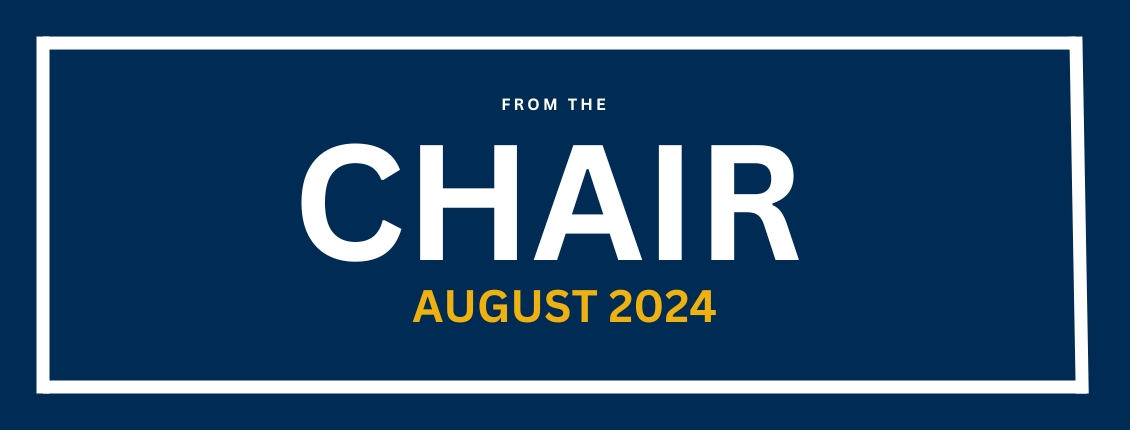
From the Chair
The Paris Olympic games were spectacular in every sense. The setting was superb, and for our riders, they are part of a small group who have done something that will likely never be repeated. All of our teams represented us with great skill, tenacity and commitment and we congratulate them on being such great ambassadors for our sport and our country.
Seeing horses and riders participate at the pinnacle of competition is a humbling experience. The margin for error is so small, and the degree of difficulty in all three disciplines is intense. To achieve this level of competition is a long road, and involves so many moving parts; breeders, grooms, veterinary support, coaching, young horse trainers, the opportunity to compete at all levels from introductory to elite are all critical ingredients. For us, to take away what we have learnt and translate it into future planning is key. Coming out of Paris, our sights are now firmly set on LA and beyond that Brisbane 2032.
What is most apparent looking at the countries who are successful at Olympic level is the depth of horse and rider talent that is evident from grass roots up. To be good at the elite level, we must first be really good at the basics. The more horses and riders progressing through the levels, the better our sport gets overall. Our Board has a philosophy of supporting grassroots development. This makes sense both for development of elite riders, but fundamentally this is where most of our members are. Ensuring sufficient grounds, officials, coaches and providing support to grassroots members and organising committees is one of our key reasons for being and this is where you will see us focus.
The Olympics also provides reason to pause and reflect on the role of horses in sport. It is timely to reconsider our relationship with them. Science suggests that horses were first domesticated in the vicinity of 5000 years ago. Over the ages, the relationship between horses and humans has revolutionised society; transport and warfare being two key areas where without horsepower the face of the modern world would look distinctly different. Over millenia, all species of horses other than the only true wild Przewalski's horses, and the domesticated species, became extinct. The evolution of the domestic horse has happened in conjunction with humans and in that sense it is inarguable that their fortune and wellbeing is tied to their interaction with humans. This poses the questions for us, do they get a benefit from the relationship, and given their dependence on us, how should we best ensure their wellbeing?
While in some parts of the world the horse retains the role of pack animal, food and transport, since the advent of the motorcar, for us the horse now plays a role of companion and sports partner. The world is a very different place to 100 or 1000 years ago, both in technology and social expectations. We now have a higher expectation of our standard of care and wellbeing for our horses and we are expected to demonstrate this to an increasingly demanding public. In the end though, the reason we ourselves expect and demand the best level of care, wellbeing and experience for our horses is as much for us as for them. Our relationship and the benefit of interaction with horses is, I believe, a two-way street. Horse wellbeing is a critical pillar of EA and the more we understand what that means the better we can deliver it. You will see initiatives from our National Safety and Wellbeing Committee over the coming months where we will make every effort to put horse wellbeing at the forefront of everything we do.
Finally, this week, our Paralympians will be warming up for their time to perform at Versailles. To our four athletes and their horses who are representing us, we wish you the very best of luck and hope you have the most memorable experience. Good luck!










